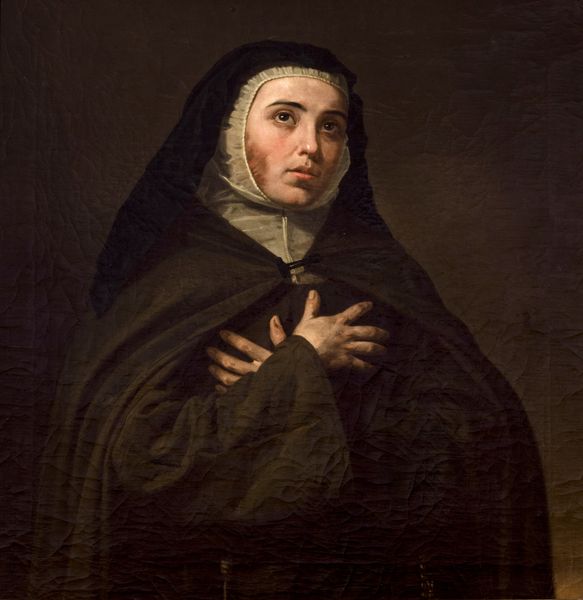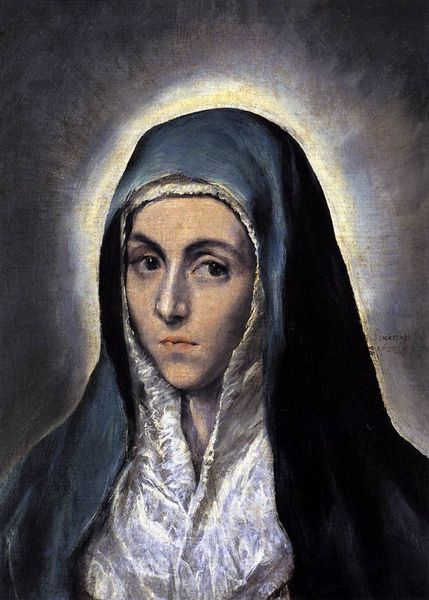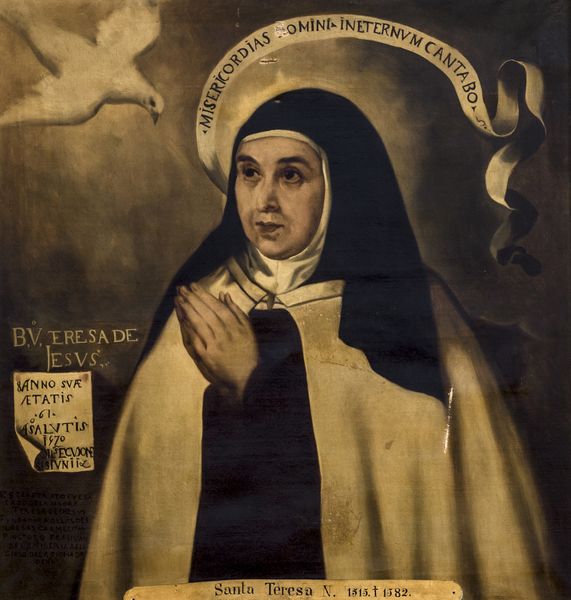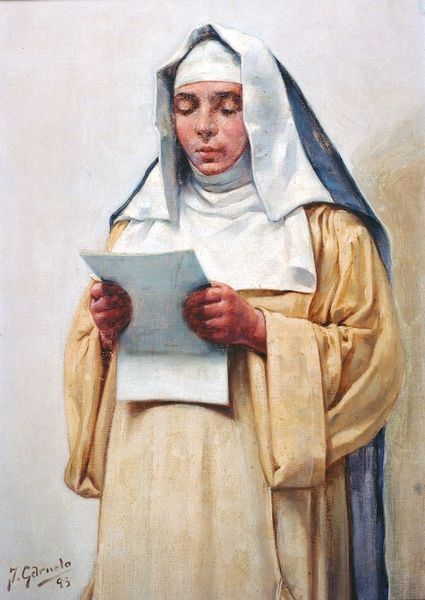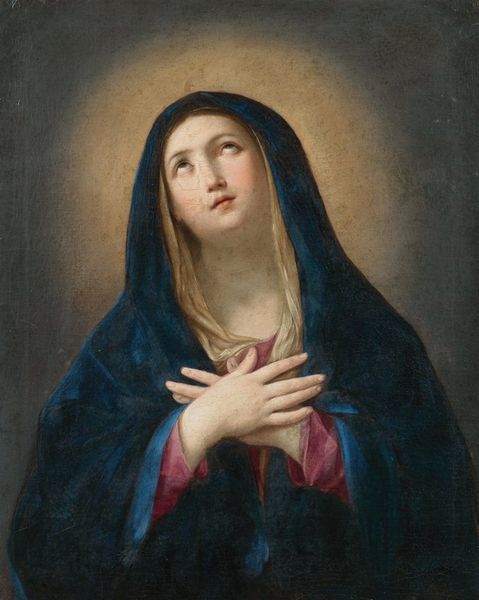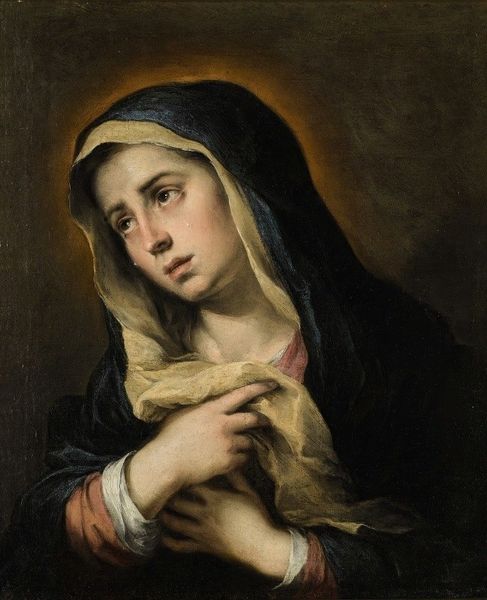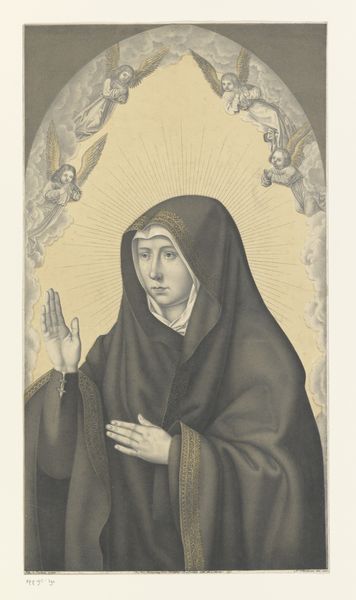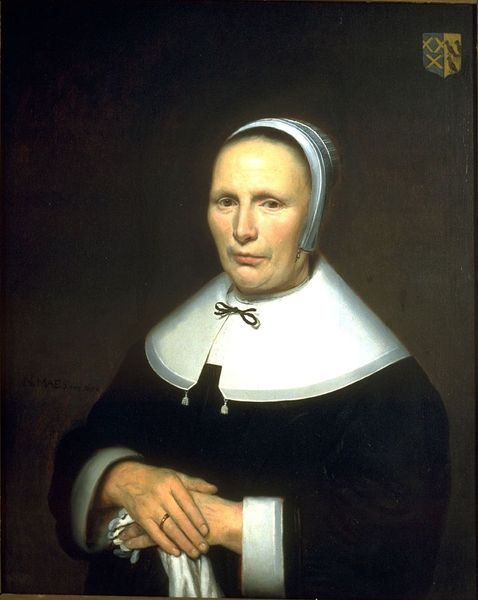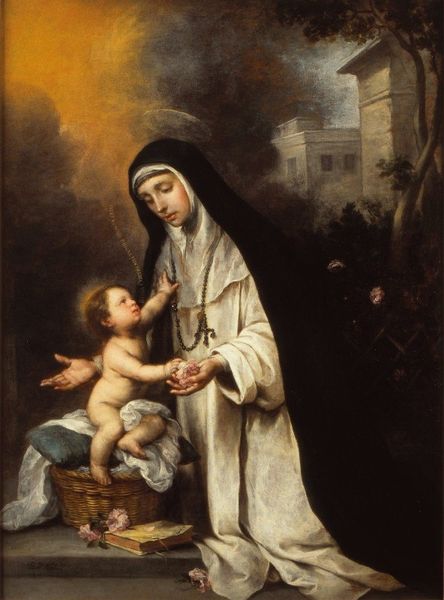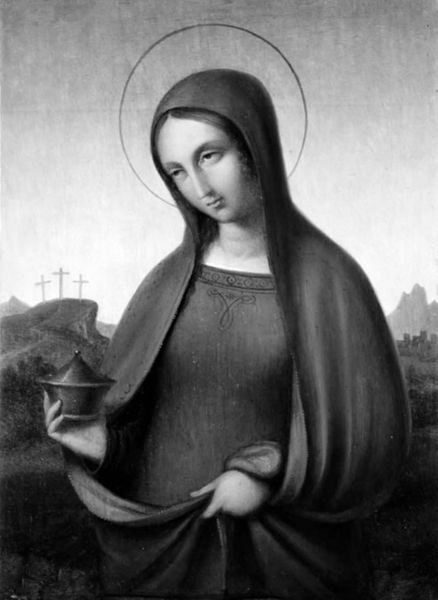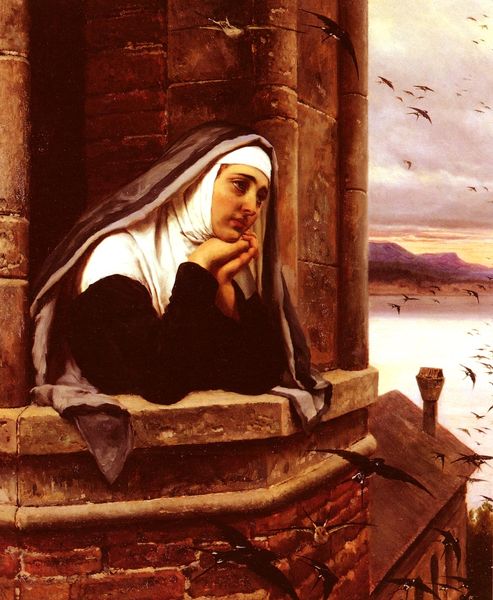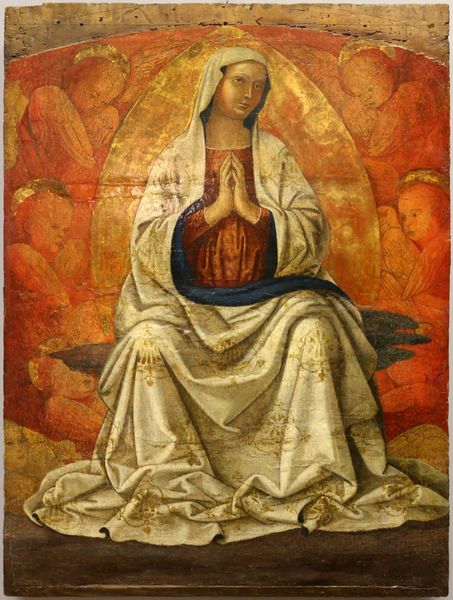
painting, oil-paint
#
portrait
#
portrait
#
painting
#
oil-paint
#
figuration
#
realism
Copyright: Raúl Berzosa,Fair Use
Curator: I'm struck by the textures first of all - the rendering of the veil, the folds of the habit, and especially the roses in Raúl Berzosa's *Saint Theresa of the Child Jesus*. There's something very palpable there. Editor: Immediately I feel an overwhelming sweetness and perhaps a tinge of sorrow radiating from this painting. The muted color palette gives it such a solemn aura, wouldn't you agree? Curator: I do, it definitely has that melancholy weight. And that palette also allows the details to emerge more organically. Look closely at the light reflecting on the ivory and crimson rose petals. I find this combination intriguing, roses together with the crucifix, which invites reflection. It's an intimate paradox, death and beauty intertwined in a rather painterly devotional object. Editor: Yes! And it makes me wonder about the sheer labor invested in producing devotional pieces like this. Oil paint, traditionally, isn't the cheapest of materials. Someone decided the subject was important enough to spend resources on it. Also, those roses are almost too perfect, wouldn't you say? They seem like manufactured symbols and not really flowers picked from a garden... Curator: A symbolic, or maybe stylized choice... the perfection that transcends earthy mess. The roses can represent divine love, they suggest the saint's grace and virtue, and might emphasize her humility. Editor: Right, the roses are almost commodities... How many portraits like these existed? How standardized the labor practices might have been in their manufacture and reproduction for religious organizations? I think considering those questions reveals power relations encoded into images of faith. Curator: Precisely. And the artist’s individual skill doesn't diminish because we examine the cultural or social implications. It can even magnify our view. To realize, this wasn't made in a vacuum... and its art is there, beyond devotional matters. It really pulls the heart strings and gives insight to our present gaze and soul. Editor: So much to think about—the symbolism, labor, the power, and the artist. I find myself looking closer, questioning the story behind this and realizing it goes way deeper than beauty in its initial appearances. Curator: Definitely. It makes one grateful for having had this glimpse into Saint Theresa, into the hands of its maker, and into a story about belief.
Comments
No comments
Be the first to comment and join the conversation on the ultimate creative platform.
